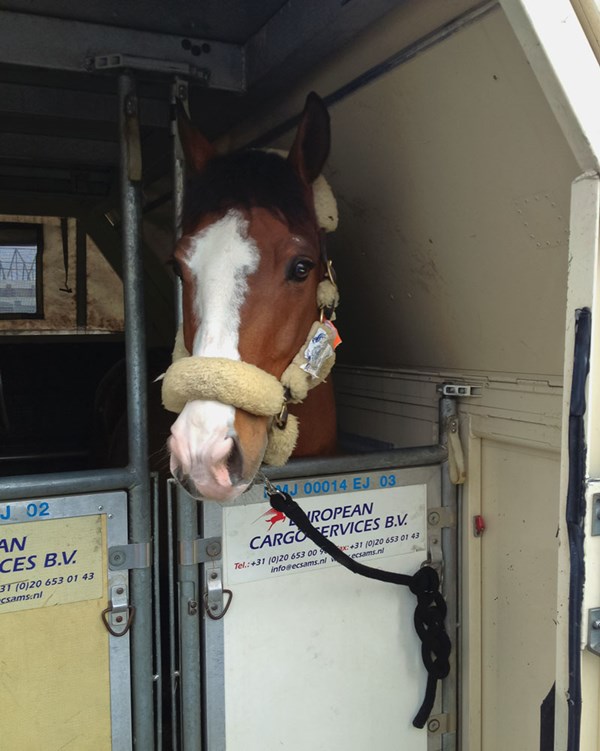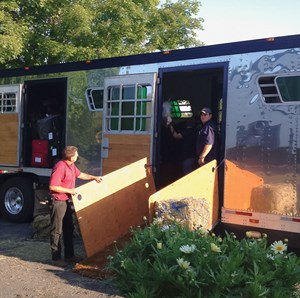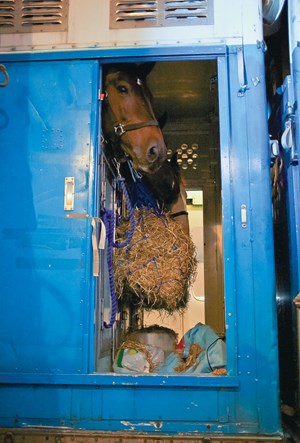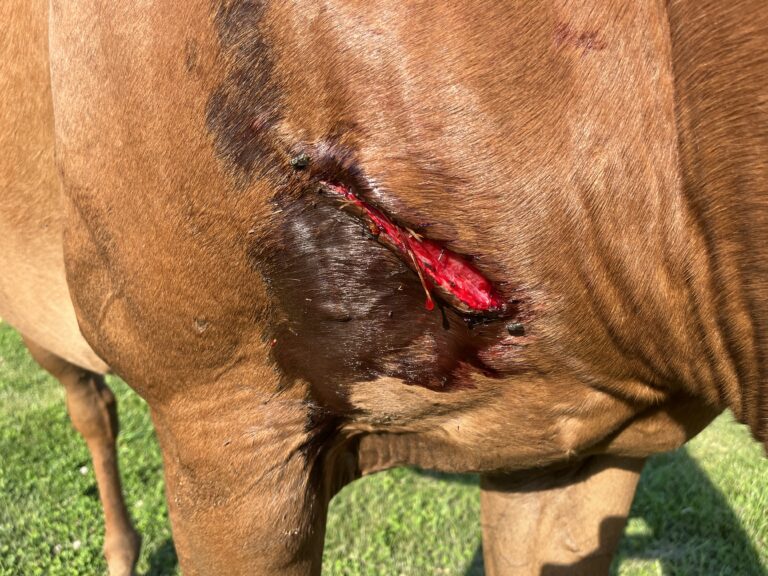Whether you are relocating your horse to Wellington, Florida, for the show season or moving permanently to a new home elsewhere, careful planning is necessary to ensure the health and safety of your equine partner. From identifying the shipper to packing your equipment, there are questions that need to be answered throughout the process. In Part One, four experts cover transportation options, when to travel and how to prepare for the journey.

Choosing a Mode of Transport
Plan early: Once you know you need to ship your horse a long distance, decide if you will be going by land or air as soon as possible. In the case of scheduling your trip, time is your friend, especially during peak season. Countless horses will be traveling to and from areas like Florida and California, so the sooner you can decide if you need to work with a professional shipper, the better your chances of reserving a transport spot on your ideal travel dates. “In the spring, everyone is leaving from Florida so it is very difficult to find a spot on the flights,” says Karin Ahlqvist, transport manager for The Dutta Corporation, an international horse-transport company.
Transport: How is your horse going to get to his location? This usually involves a combination of privately owned trailers, commercial air-ride trailers (with air suspension for a smoother ride) and/or airplanes. So how do you decide which way to go? Your personal trailer is probably the easiest way to transport for a quick trip, but “the air-ride trailer is nice if your horse is going for many hours,” says Ahlqvist.

Flying is another option. This takes time at the airport, but it can be worth it, says Ahlqvist. “The cost is the biggest reason why people don’t fly. It is expensive to go a short distance, like Maryland to Florida, and it would put more stress on the horse to do that than take an air-ride trailer. Even with a short flight, horses have to be at the airport early and it is almost as expensive as it is to fly to Europe.”
Ahlqvist encourages owners to consider what their horse is used to. For a horse that has never flown on an airplane before, it can be much less stressful to opt for the air-ride trailer if you are unclear about which to choose.
Once you have decided on your mode of transport, you might also have to consider a full box or a half stall when asking about shipping options. If you are given the choice, select the stall style your horse is most accustomed to traveling in.
Scheduling a Trip
Now that you have your method of transport, you need to decide when your horse is going to travel.
Consider the ideal ship date: When scheduling your trip, keep in mind that many required vaccines need to be done at least 30 days in advance, says Ahlqvist. “A horse that is up to date on shots doesn’t need as much preparation time. Additionally, a well-traveled horse doesn’t need as much recovery time as an inexperienced horse that might find the new experience quite stressful.”
Account for shows and schedule downtime: This is most important if you are going to be attending a horse show or other major event soon after you arrive at your destination. You have to account for the change in your horse’s work schedule. Ruben Palomera, former groom to U.S. Olympians Debbie McDonald and Adrienne Lyle, points out that horses can benefit from a lighter workload before their trip.
When dressage trainer and Florida resident Caroline Roffmann attended the 2012 National Young Horse Championships in Lamplight, Illinois, she planned her trip around the horse’s work schedule and picked a Tuesday ship date for her weekend show. “I allowed him to rest the day of shipping with just hand-walks and grazing,” she says. “Upon arrival, I hand-walked and grazed the horse later in the day. The next day I hacked and gave the horse an easy day. The third day after arrival, I rode lightly and headed towards normal work.”
Packing and Preparations
Once you have chosen the method and date for your trip, you are ready to start gathering everything you will need for your journey.

Coordinate shots and medical paperwork: Coordinate with your veterinarian and shipping company to make sure that your horse will be up to date on shots and have all the appropriate paperwork for his journey.
Pack securely: “Whether you are flying or trailering, make sure every bit of your equipment is packed securely,” says Meaghan Byrne, dressage trainer and former groom to international competitor Catherine Haddad-Staller. “Use trunks with secure lids and make sure nothing is falling out or loosely packed. When loading the equipment into the plane or trailer, make sure to use bungee cords or rope to secure everything in place,” adds Byrne. “If something comes loose and rolls under the horse’s feet, it can be very dangerous and cause serious injury.” Even if it doesn’t get in with the horses, you don’t want to ruin your expensive equipment.
Check the travel temperatures and bring appropriate blankets: “Look at the weather forecast and ask your shipper what temperature it will be in the transport stalls,” says Byrne.
Ahlqvist adds that there are no special requirements for what the horse must wear on the airplane or trailer. “We encourage people to ship their horse in whatever they are used to. However, horses don’t have a blanket on when they fly because it is air-controlled and gets pretty warm inside. If they do, it is a very light sheet, but we usually recommend nothing. You can store a blanket for them to use when they get off-loaded.”
Plan to wrap or boot your horse appropriately: “Horses that don’t fly a lot don’t usually wear wraps,” says Ahlqvist. “It is hard to get in to adjust them, and the partitions make it hard to fix wraps if a horse kicks. Frequent travelers used to the wraps, however, tend to wear wraps in flight.” For trailering, if your horse wears wraps or boots, then use them on the long-distance trips. However, Ahlqvist cautions that if the horses aren’t used to something on their legs during shipping and you put them in something, if they start kicking, it can cause injuries.
Gather maps and bring a GPS: Even if you are traveling by plane, you will most likely have to trailer to the airport. “Make sure you have the address of each stop along your trip,” says Byrne. “Print out directions ahead of time and have your GPS handy. Technology is a wonderful thing, but it can often malfunction. There is nothing worse than being in a remote area and losing your GPS signal, so always have a backup plan that includes written directions to your destination and appropriate contact numbers.”
Once you have your equipment secured, your medical paperwork in order, travel gear prepared and your GPS in hand, you are ready for the final countdown to moving day. Remember that your veterinarian, shipper, barn manager and trainer are all great resources for a long-distance trip with your horse, and you should not hesitate to ask them for professional advice when planning.
Next month, we will cover what you need to know about nutrition, hydration, insurance, grooming/ clipping and posttravel therapies for the traveling equine.











